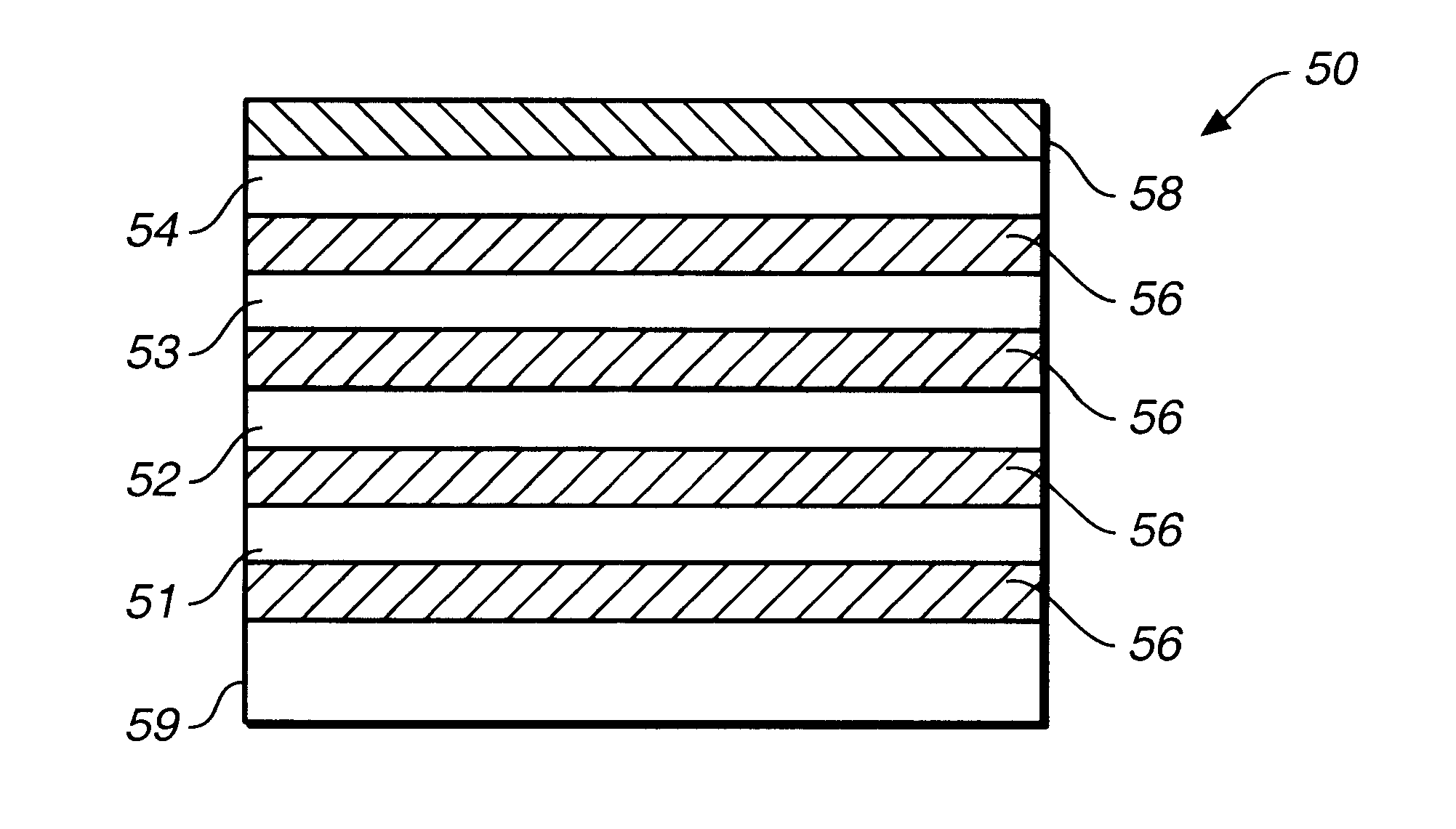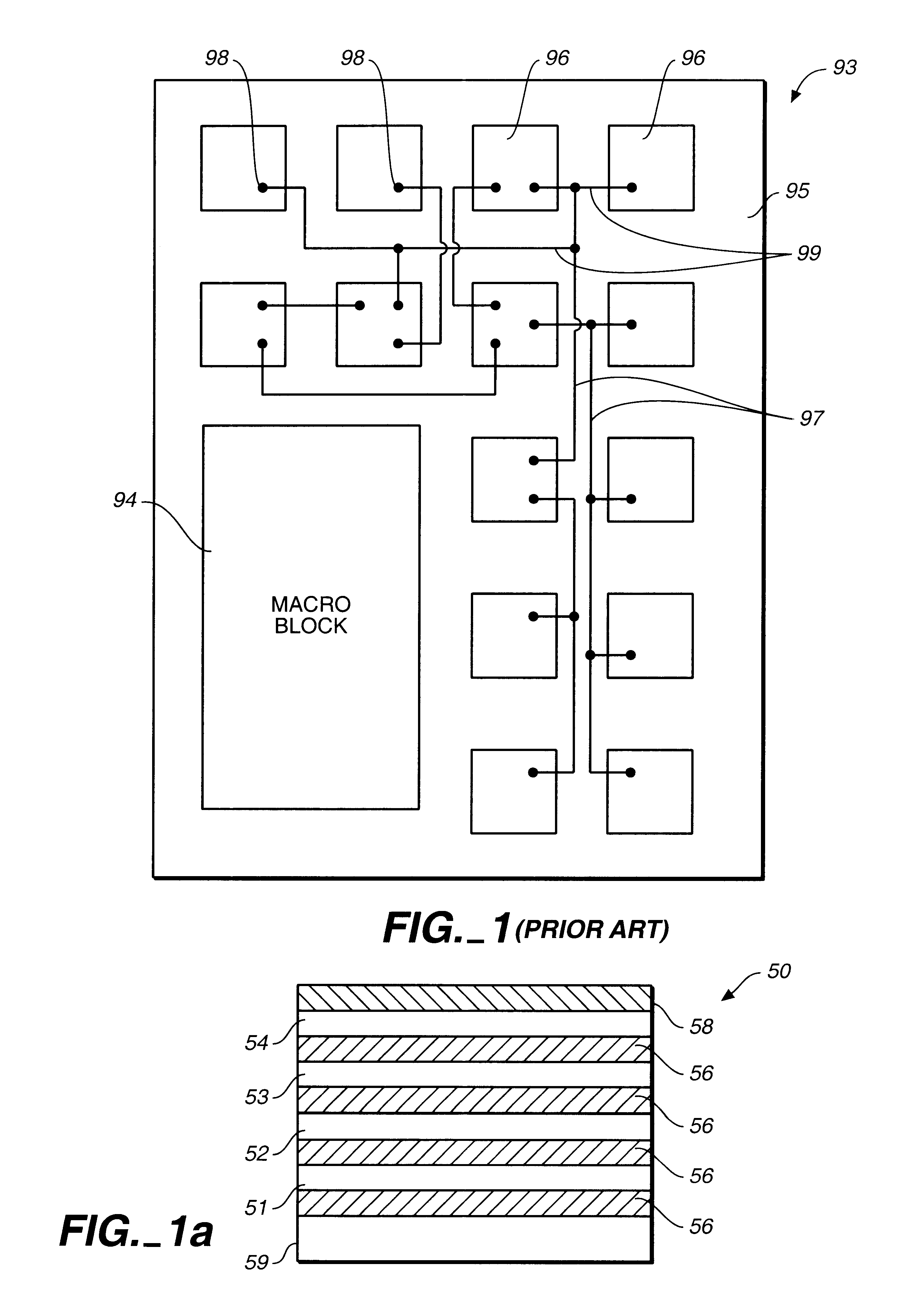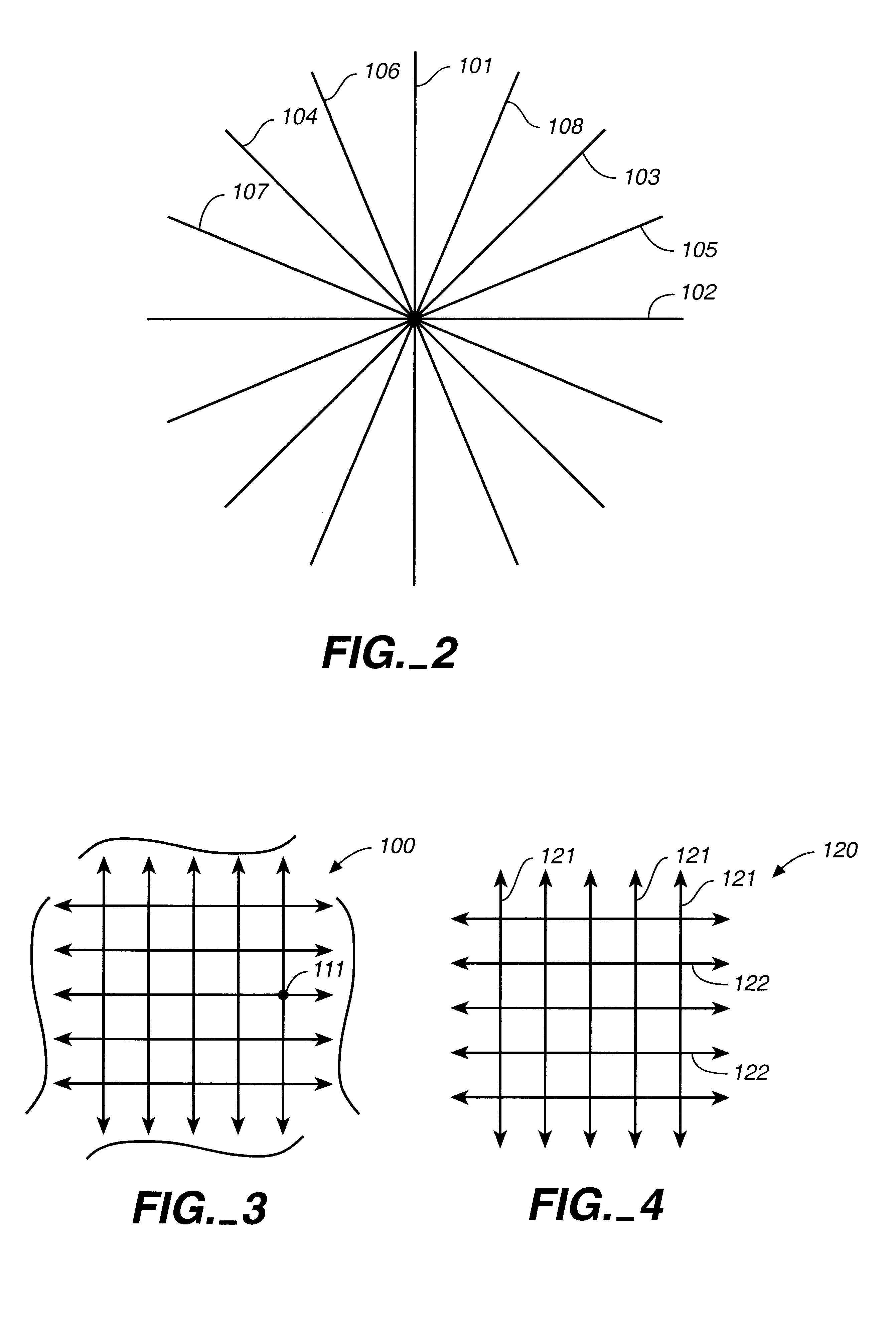Hexadecagonal routing
a technology of hexadecagon and routing, applied in the field of microelectronic integrated circuits, can solve the problems of increasing the number of transistors, increasing the time required for data communication, and requiring more functionality
- Summary
- Abstract
- Description
- Claims
- Application Information
AI Technical Summary
Problems solved by technology
Method used
Image
Examples
Embodiment Construction
FIG. 1a provides a simplified cross-sectional view of a typical integrated circuit chip (or die) 50. As shown in FIG. 1a, chip 50 includes a semiconductor substrate 59, metal layers 51 to 54, electrically insulating layers 56, and passivation layer 58. Semiconductor substrate 59, which is typically polysilicon, is used for forming the transistors and other electronic devices.
Metal layers 51 to 54 may be formed from any of a variety of materials including aluminum, copper or an electrically conductive alloy. Between metal layers 51 and 52, 52 and 53, and 53 and 54, and between metal layers 51 and substrate 59 is an electrically insulating layer 56, which typically is formed as an oxide film. Connections between any of metal layers 51 to 54 and semiconductor substrate 59 are made using interlayer holes called vias. Passivation layer 58 functions to prevent the deterioration of the electrical properties of the die caused by water, ions and other external contaminants, and typically is ...
PUM
 Login to View More
Login to View More Abstract
Description
Claims
Application Information
 Login to View More
Login to View More - R&D
- Intellectual Property
- Life Sciences
- Materials
- Tech Scout
- Unparalleled Data Quality
- Higher Quality Content
- 60% Fewer Hallucinations
Browse by: Latest US Patents, China's latest patents, Technical Efficacy Thesaurus, Application Domain, Technology Topic, Popular Technical Reports.
© 2025 PatSnap. All rights reserved.Legal|Privacy policy|Modern Slavery Act Transparency Statement|Sitemap|About US| Contact US: help@patsnap.com



